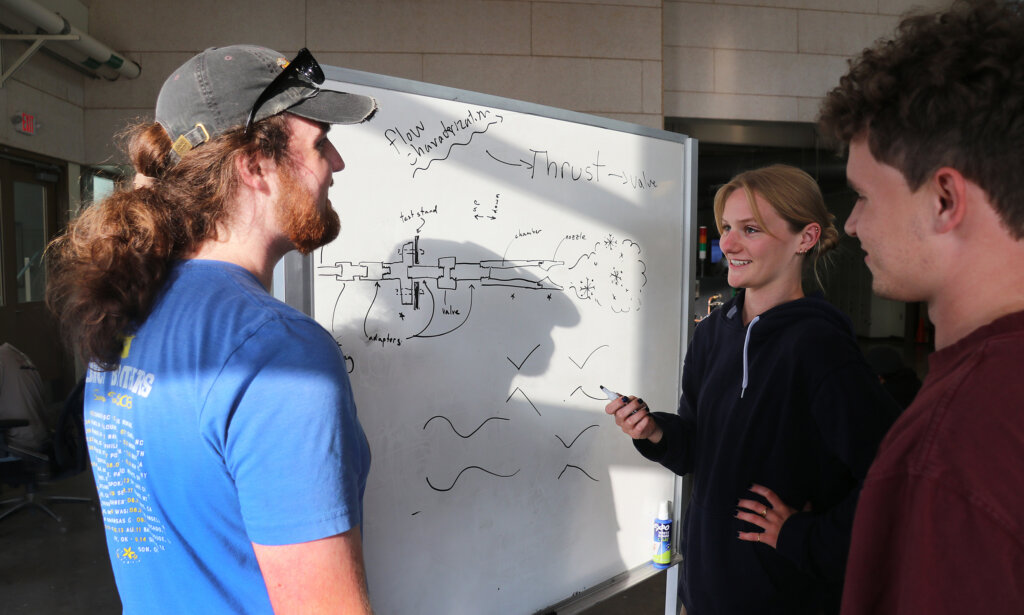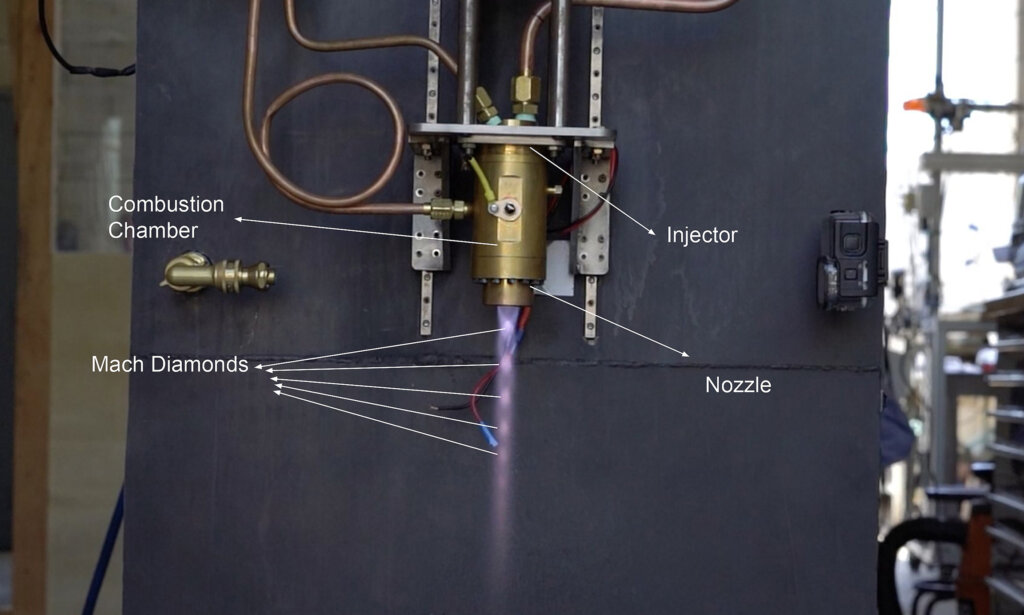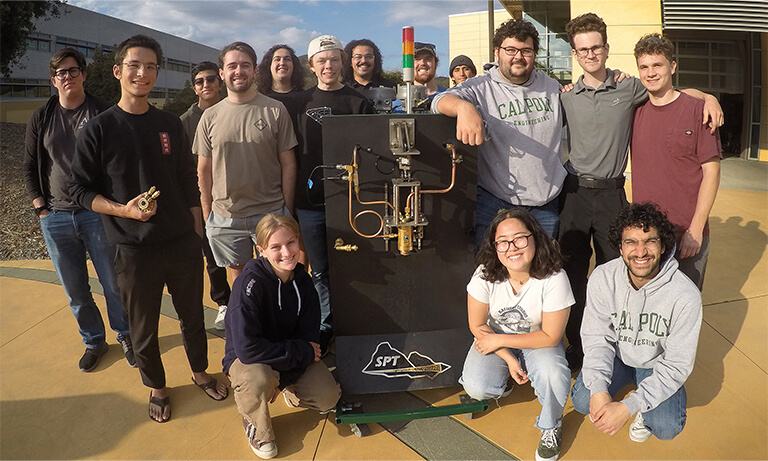Undergraduate students in SLO Propulsion Technologies design, build and test a liquid, bipropellant rocket engine
In the middle of a three-second hot fire test of a liquid, bipropellant rocket engine, Adam Boegel saw what he was looking for — little diamond structures in the blue exhaust.
“The diamonds indicated we had the ethanol and gaseous oxygen combusting at optimal performance and we had reached supersonic flow out the back,” the Cal Poly aerospace engineering undergrad said. “We actually calculated it afterwards at about three times the speed of sound. Really, really cool.”
The successful test in May ended a countdown that began 13 months before when Boegel and mechanical engineering students Yotam Barr, Cole Busch, Cameron Jones, Marco Salguero, Kyle Schumacher and Paul Staley formed a club, SLO Propulsion Technologies, that aimed to design and manufacture a small rocket engine that would ignite their education in rocketry.
Boegel said it has been an “incredible journey” in Learn by Doing.

“When we started the club we had to figure out everything — discover any and all gaps in our knowledge that we needed to overcome — and so we sought out faculty members and our industry connections for advice,” he said. “And from there, we started crowdfunding, which we really didn’t know much about. And then the design process and the multiple design reviews. It has been a huge effort from everybody here to make it happen.”
What happened after countless late night and weekend hours in the Bonderson Projects Center is the development of what the club calls MK-1, a demonstrator test engine. Boegel said that after the “usual couple of dud tests,” MK-1 is performing as well as more expensive engines that in the past have been designed by graduate students or industry.

Boegel said the engine also offers an endless variety of future testing options and he credits that wide spectrum of research opportunities as one of the reasons SLO Propulsion Technologies has grown quickly. The club now includes 25 engineering students from several disciplines. Like Boegel, who will intern at SpaceX this summer, many of the members have capitalized on the club experience to secure internships at prestigious aerospace engineering companies.
“We set out to create a simple, reusable platform that cost under $3,000 where students could test a lot of different parts and nozzle shapes and new sensor technologies,” he said. “The continual opportunities for education are the foundation of the club and the reason students are inspired and enjoying the work.”
Barr, chief engineer for the club’s next project, a larger and more advanced engine called MK-2, agrees.
“I think the way the club operates gives people the opportunity to become true masters of whatever part of the project they’re interested in,” said Barr, who will spend the summer interning at Stratolaunch Systems. “I hopped on this project because there were a bunch of people who I thought had really great ideas. And we just keep moving. We’re not restricted by the meeting hours, we’re trying new methods and we get to experiment a lot. All of which I really enjoy.”
Boegel said the fun doesn’t prevent a lot of work on more serious topics like safety. Asked about posted videos of the tests that show some large billowing flames, he said the club was confident in its operating practices after intense reviews from faculty and industry.
“Of course, you’re spewing combustion gases out at two or three times the speed of sound and there’s something inherently dangerous about that,” he said. “What that video doesn’t quite show, unfortunately, is that we are behind bulletproof glass and concrete blocks. Safety is one of the top values of the club along with education and ownership, and we think about it every day. You know, we’re really hoping to set this precedent that undergrads can successfully do rocketry like this in the future.”
For more information on SLO Propulsion Technologies, see https://www.slo-prop.com/
By Dennis Steers


